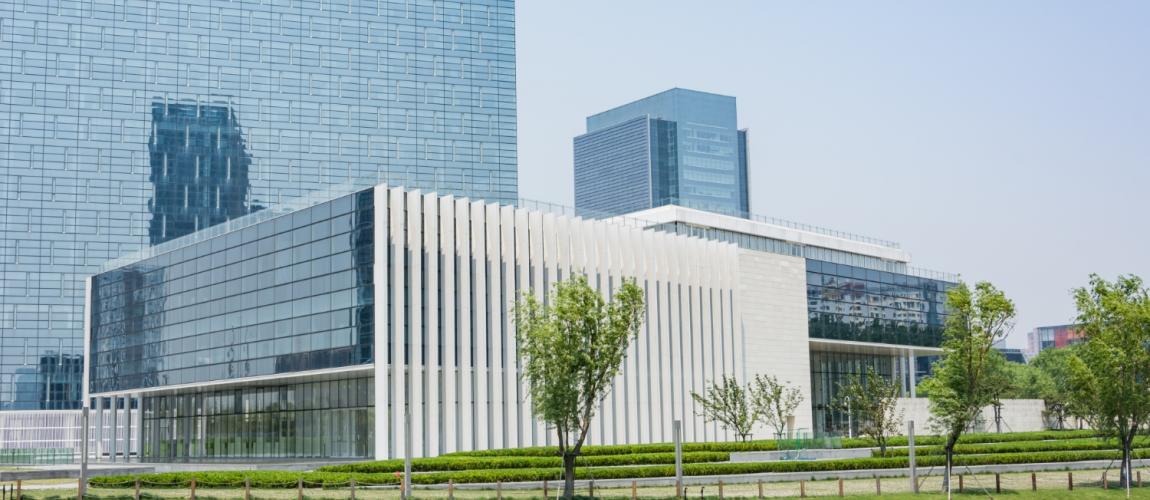Administrative Center, Tlajomulco Municipality, Jalisco, Mexico

Photo Credit: Image by Freepik
On this page: A case study on Administrative Center, Tlajomulco Municipality, Jalisco, Mexico. Find more at the Municipal Public-Private Partnership Framework - Project Summaries section for brief summaries of around 100 projects from around the world, examples of successes and challenges, as well as innovative ideas on solutions, or visit the Guidelines on Innovative Revenues for Infrastructure section.
Project Summary: Background The municipality of Tlajomulco of Zuñiga in Guadalajara, Mexico needed a way to relieve the problems stemming from the sprawl of its public offices, which were in a state of disrepair, as well as to adapt to population growth that was outpacing the capacity of the authorities to provide adequate administrative services. To this end, the municipality chose to pursue a PPP to deliver a new, central facility for the performance of its public administrative functions. Project Structure The municipality solicited bids for a PPP under which the private partner would design, finance, build, operate, and transfer the new Tlajomulco Administrative Center (CAT). Four bidders participated in the national competitive tender and Operadora Audaz S.A. was selected as the winning bidder. A 30-year PPP agreement was signed on 24 February 2011 between the municipality of Tlajomulco and Desarrolladora Centro Administrativo Tlajomulco S.A.P.I. de C.V., the project company created for the delivery of the project. The project risks were allocated as follows. The contracting authority would be responsible for risks related to permitting, land rights and acquisition, archeological findings, demand, furniture and equipment replacement, and inflation. The private party would assume the design, cost overrun, construction, operation and maintenance, latent defects, and interest rate and financing risks. The municipality, as well as Desarrolladora Centro Administrativo, would share risks related to force majeure and change of law. The project entailed the delivery of: (i) an administrative building with an area larger than 6,200 m2 - sufficient to accommodate more than 630 public servants and with a capacity to serve more than 2,000 daily visitors – to include closed-circuit television, access controls, alarms, and automatization systems; (ii) a multiple-use gymnasium with a capacity for 700 sitting or 1500 standing visitors for cultural, sporting, social, and political events, to include a high fidelity sound system, air conditioning, and multiple-use courts; (iii) external facilities, such as soccer and skate courts, and a 390-space parking area; and (iv) a road project involving the renovation of 7 km of main roads, bike routes, a modern water and sanitation system, and installation of traffic lights around the new administrative center. The agreement provided for an initial up-front investment of nearly MXN 250 million (USD 13 million) by the private partner. In return, the municipality agreed to make monthly payments to the private partner of MXN 4.4 million plus VAT (USD 230,000). This payment consists of a monthly payment for the investment in facility construction, a payment for the building management services (to be provided effectively), and a payment for any variation in services. The monthly payments are limited to a maximum of 349 months and represent less than 5 percent of the municipality’s revenues and approximately ten percent of its current expenditure, as allowed by law. To enhance its creditworthiness, the municipality incorporated a fideicomiso (trust account) and opened a contingent line of credit, guaranteed by federal funds, to back the monthly installment payments. Lessons Learned The project was successfully delivered on 17 January 2012.1 The regulatory framework within which this project was carried out involves three regulatory issuances: i) the city council’s internal regulation; ii) the municipality’s governance and public administration regulation; and iii) the municipality’s investment and service provision projects regulation. A regulation that specifically addressed the possibility of entering into a PP did not originally exist but one was enacted to make the project a reality. In addition, the municipality’s regulations did not contemplate mechanisms or institutions for the representation of opposition political parties or civil society in the project’s development. However, for this project, the project initiative was signed and approved by all political parties’ representatives, which reflects good practice for PPP projects. While many of the public servants involved had professional education and experience in project management and finance, the project structuring and technical preparation required the participation of external experts and advisors. As this shows, even well-staffed and experienced municipalities may benefit from qualified, outside technical assistance in preparing and delivering PPP projects. A final key attribute of this project was the level of detail with which the municipality identified and understood its needs and objectives and reflected these aims in the tender documents. This provided a reliable basis for private participants to enter and deliver the administrative center in accordance with clear objectives and standards. Footnote 1: Source(s) accessed on February 6, 2019 http://www.cca.org. mx/ps/funcionarios/ muniapp/descargas/ Documentos_ de_apoyo/ informaciontematica/ capp/Caso_APP_ Tlajomulco.pdf
The Guidelines on Innovative Revenues for Infrastructure (IRI) is intended to be a living document and will be reviewed at regular intervals. They have not been prepared with any specific transaction in mind and are meant to serve only as general guidance. It is therefore critical that the Guidelines be reviewed and adapted for specific transactions.
To find more, visit the Innovative Revenues for Infrastructure section and the Content Outline, or Download the Full Report. For feedback on the content of this section of the website or suggestions for links or materials that could be included, please contact the Public-Private Partnership Resource Center at ppp@worldbank.org.
TABLE OF CONTENTS
I. Innovative Revenues for Infrastructure (IRI)
2. Introduction to Commercial Value Capture (CVC)
3. Applying CVC in Infrastructure Projects
2. Case Studies in CVC from International Experiences
Related Content
Select WBG PPP Toolkits
Featured Section Links
Additional Resources
Climate-Smart PPPs
Finance Structures for PPP
Type of ResourceFinancing and Risk Mitigation